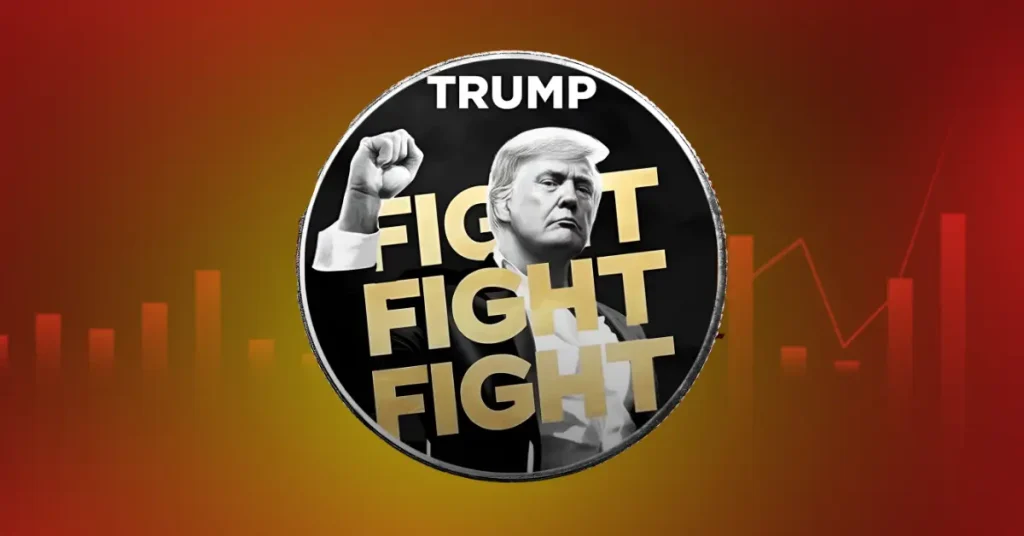$TRUMP Coin Skyrockets to Exchange Listings – Lightning-Fast Approval Sparks Investor Safety Debate
Crypto exchanges just turbocharged the meme coin circus—$TRUMP hit trading platforms faster than a political scandal trends on Twitter. Was due diligence sacrificed for hype?
Speed vs. Security: The New Crypto Dilemma
While traders cheer the record-breaking listing velocity, regulators are side-eyeing the process. "When exchanges move quicker than a Trump tweet, someone's not checking the fine print," quipped a Wall Street analyst who definitely owns Bitcoin.
The listing frenzy comes as exchanges battle for market share, potentially turning due diligence into an afterthought—because who needs compliance when FOMO drives volume?
This isn't financial advice, but maybe pump the brakes before YOLO-ing into tokens approved faster than a White House intern clearance.

When Donald Trump launched his own meme coin, crypto exchanges didn’t wait. They listed it within hours – something that rarely happens, especially for high-risk tokens.
The coin, simply called $TRUMP, was listed by eight of the top ten crypto exchanges within 48 hours of launch. Coinbase, which normally takes weeks or even months to approve tokens, moved in just one day.
For comparison, it took these same exchanges an average of 129 days to list other popular meme coins like Pepe, Bonk, and dogwifhat.
Why Did Trump’s Memecoin Get Listed So Fast?
Exchanges like Bitget, OKX, MEXC, and Coinbase said they didn’t skip any steps. They claimed the listings were fast because of strong user demand.
“The crypto space was buzzing with the hype,” said Bitget CEO Gracy Chen, adding that since TRUMP himself announced the token, “that should kind of solve the compliance issue.”
Coinbase’s legal head Paul Grewal said teams worked through the weekend to complete the listing, but “no steps were skipped.”
But there were clear warning signs that are usually taken seriously starting with who controls the coin.
80% of the Coin Was in Trump’s Hands
At launch, Trump and his partners controlled 80% of the total supply. In crypto, this level of control is a red flag. It means a small group can dump large amounts of tokens, crashing the price while retail investors are still buying in.
That’s exactly what happened.
The coin hit $75.35 just two days after launch. Then it collapsed to around $9.55, leaving most holders with losses.
According to data analyzed by Bubblemaps:
- 45 wallets made $1.2 billion in profits
- 712,777 wallets lost a combined $4.3 billion
- Around half a million wallets made small gains
Yet the coin stayed live, and the exchanges made millions in trading fees.
Trump’s Influence Changed the Rules
After Trump won the 2024 election, the crypto environment shifted fast. The SEC dropped or paused major cases, including one tied to a Trump family project. Soon after, meme coins were no longer treated as securities.
That gave exchanges more room to MOVE and they did.
“You don’t say no to hosting the president’s new meme coin,” said Corey Frayer, a former senior SEC advisor.
Trump’s coin reportedly brought in $320 million for his entities. The 10 exchanges made over $172 million in trading fees.
The Bigger Concern: Investor Safety
Coinbase restricted New York users from trading the token, likely to avoid stricter local rules. But most platforms moved ahead, despite public warnings.
A day before the coin’s launch, New York regulators warned that meme coins often involve price manipulation and insider profits especially when supply is controlled by a few wallets.
Bitget’s CEO admitted the concentration was “very risky,” but said strong demand outweighed that concern.
What This Means for Crypto
This meme coin listing showed how fast the rules can bend when political power and profit align.
As Seoyoung Kim, a crypto finance professor, put it: fast listings may look efficient, but don’t always protect investors. And in this case, they didn’t.

